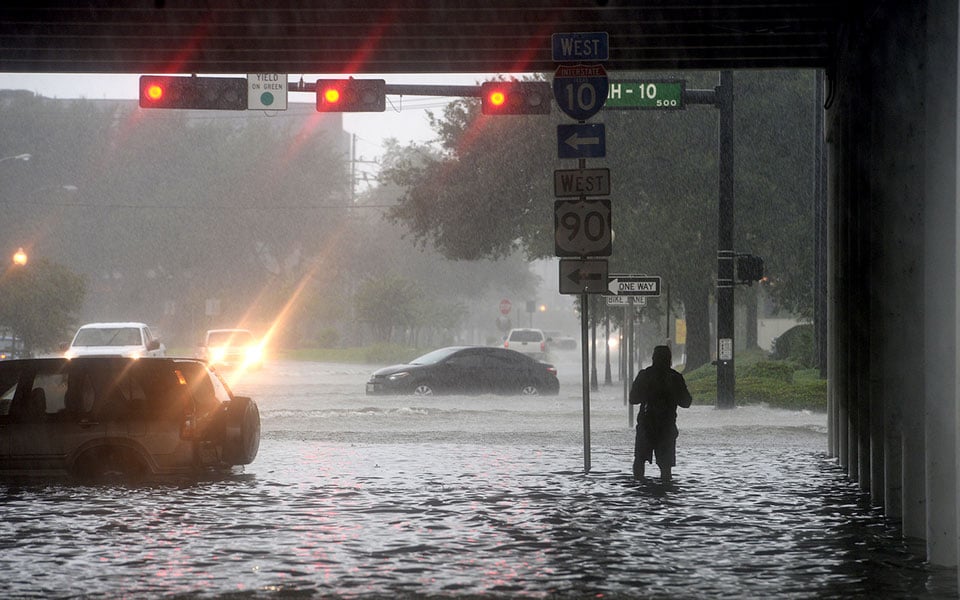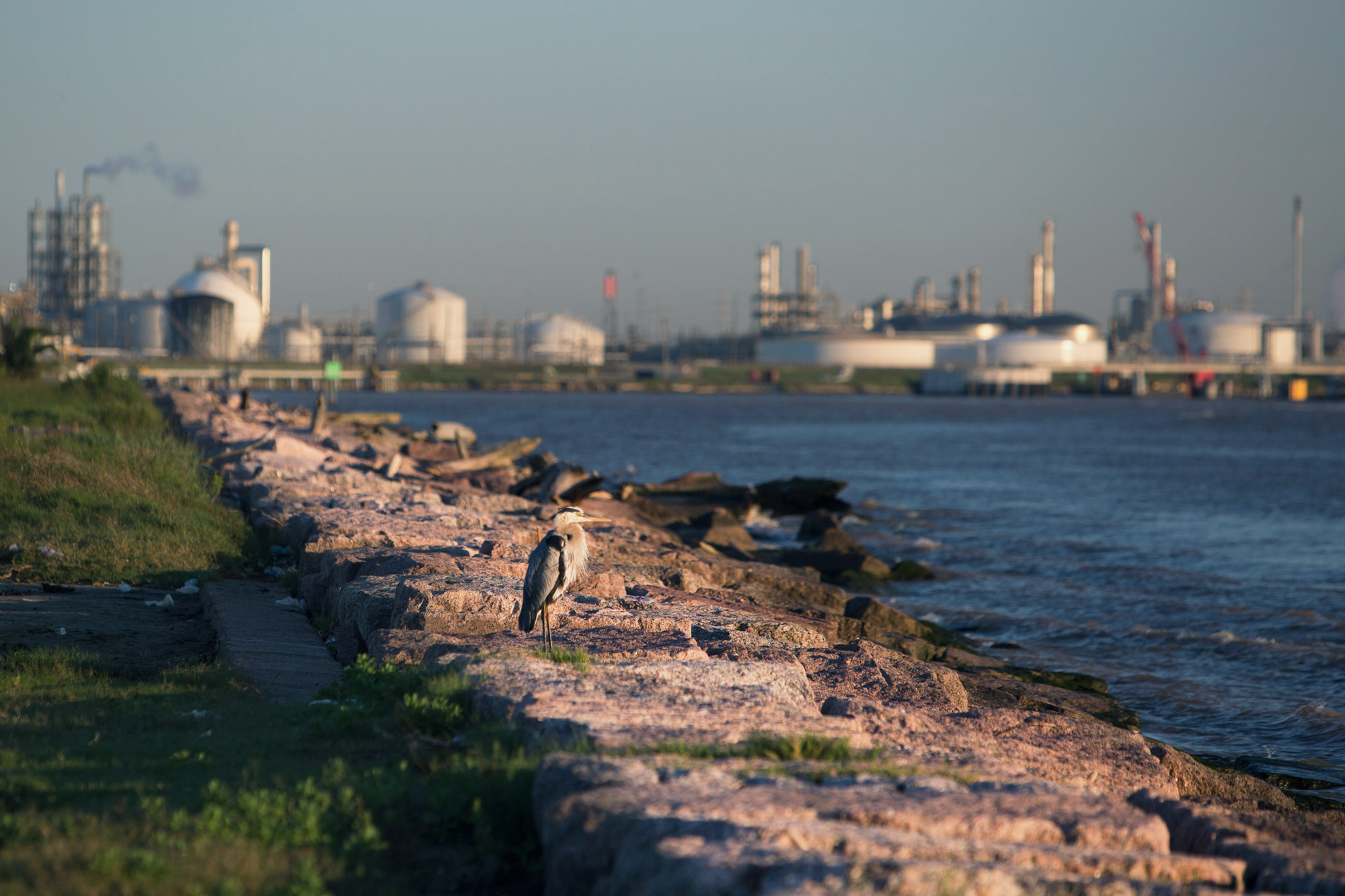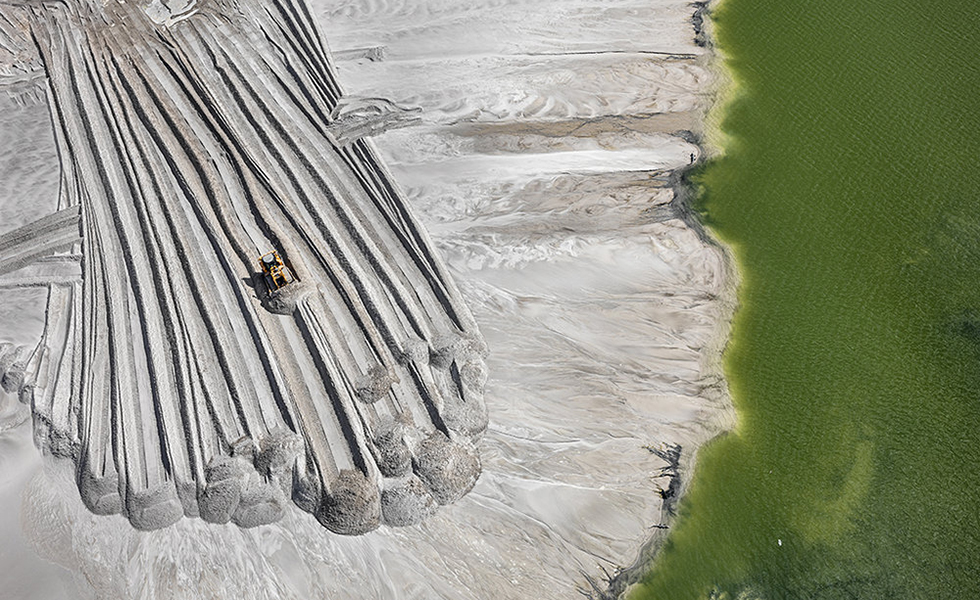
Beautiful Ruins: ‘Anthropocene’ Is a Sobering Ecological Prophecy
In this visually stunning documentary, ingenuity is humanity’s fatal flaw.
One of the first shots of Anthropocene: The Human Epoch, a new documentary chronicling how humans have changed the earth, features a massive pile of severed elephant tusks. The dismal scene takes place on a nature preserve in Kenya, where laborers arrange scarred chunks of ivory the lengths of their bodies into dome-shaped pyres.
A solemn park worker recalls finding a tusk labeled “Amboseli,” referring to Kenya’s Amboseli National Park, where she once worked. This leads to the sad realization that the tusk likely belonged to an elephant she knew. Nevertheless, she takes comfort in the knowledge that the poached ivory she and her colleagues are about to burn will never hit the black market.
“I was not able to stop this elephant from dying,” she says. “But I am able to stop it from being desecrated further.”
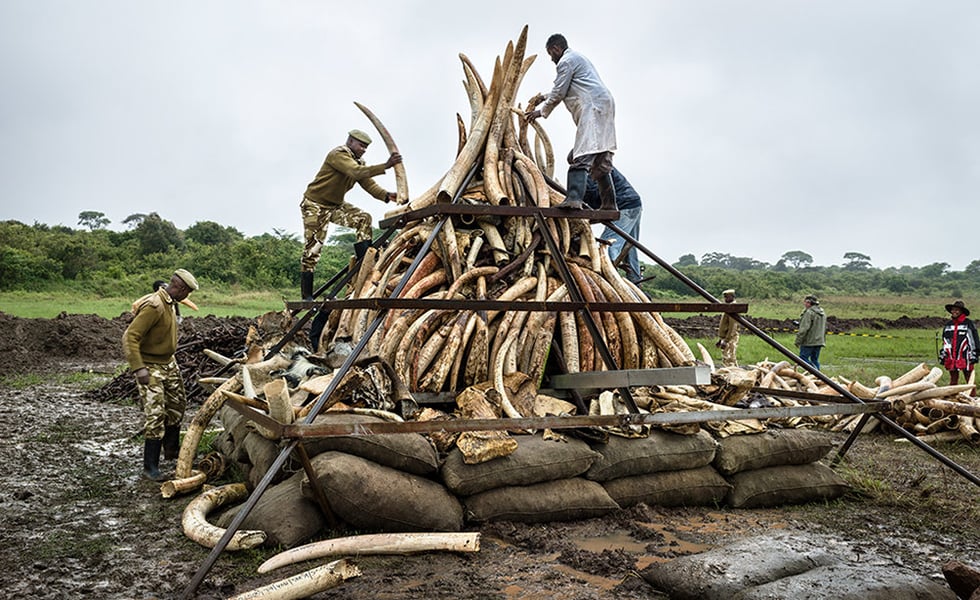
These grim words set the tone for Anthropocene, a beautifully shot yet pervasively bleak depiction of ecological damage, the third in a trilogy from Canadian filmmakers Jennifer Baichwal, Nicholas de Pencier, and Edward Burtynsky. From Kenya, the filmmakers travel next to Norilsk, “the most polluted city in Russia.” De Pencier’s camera magnificently captures this apocalyptic place: We see epic panoramas of rusting smokestacks towering over a desolate landscape, and bright orange sparks raining down on a factory floor.
“It’s not an ordinary city,” a factory worker muses in the break room with her coworkers. “At the beginning, it takes some getting used to. But when you adjust, it pulls you in and becomes your own.”
“You see beauty in everything,” another woman chimes in. “You see beauty in a flower—a flower that’s bursting through stone.”
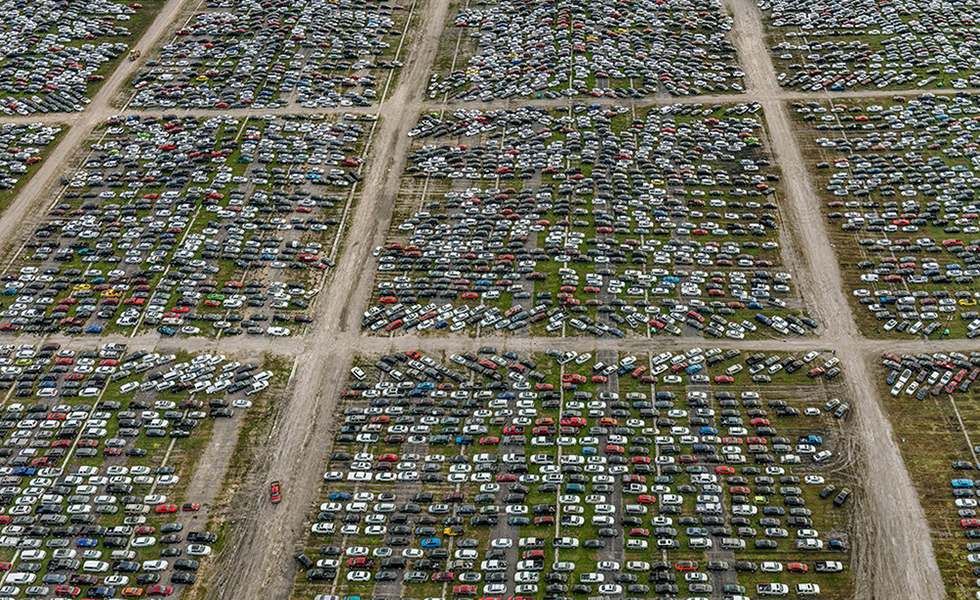
Beauty amid destruction: That sums up most of this film. In Chile’s Atacama Desert, lithium miners wade through chemical pools that gleam in the sand like a handful of spilled jewels. In Germany, giant steel excavators lumber over an expanse of dark soil, raking formerly lush earth for coal. These scenes are more art than narrative—which makes sense, since Burtynsky is a renowned fine art photographer who specializes in industrial landscapes. Each new shot of commercial processes slowly forcing back the boundaries of nature is alternately striking and unsettling.
The film, available on iTunes and Kanopy and screening Wednesday at the Austin Film Society, includes a few talking heads—experts and workers who provide insight into industrial operations and their ongoing impact on each locale—but mostly it lets the landscapes speak for themselves. That’s a wise choice, because preachy environmental films have been made ad nauseum (with 2006’s An Inconvenient Truth being the most famous). We all know the dire statistics by now. Anthropocene is more contemplative, quieter; viewers hoping for policy solutions or fired-up activists will be disappointed. Instead of a call to action, this is an invitation to sit still and watch, to silently observe how people have permanently scarred and reshaped the planet.
“You see beauty in everything. You see beauty in a flower—a flower that’s bursting through stone.”
This isn’t always easy to do. While Anthropocene is characterized by its infusion of stunning cinematography and subtle ecological horror, it doesn’t poeticize the blunt harm of human imposition. Viewers are treated to a glimpse of British Columbia’s magnificent old-growth forests, only to witness the felling of a towering, magnificent tree. Most graphically dreadful of all is a scene in Kenya, where locals forage side by side with mangy birds at a sprawling dump, trudging listlessly through mountains of waste.
To conclude its global tour of the surreal, occasionally nightmarish locales where industry and the natural world collide, Anthropocene returns to Kenya’s elephant graveyard. The mounds of severed tusks go up in flames, a dramatic symbolic refutation of the idea that the country’s natural heritage can be sold for money. A ruminative voiceover suggests that maybe the ingenuity that helped the human species thrive “can also help pull us back to a safe place for all life on Earth.”
Yet, the film’s final image of ivory pyres blazing against a dark sky more closely echoes the postmortem consolation of its first visit to the elephant cemetery. Anthropocene succeeds in finding beauty in the apocalyptic, yet struggles to strike a balance between accurately conveying humanity’s debasement of our planet and providing a glimmer of hope for the future. Ultimately, the film functions as a visual portrait of a world on the brink of collapse, where the future is more likely to bring reckoning than recovery.
Read more from the Observer:
-
The Creature of Martin Creek Lake Won’t Die: The Martin Lake coal plant in East Texas is the biggest sulfur dioxide polluter in the nation. And unlike other regional super-polluters, this one is still chugging along.
-
The Roots of Narendra Modi’s Divisiveness Are at Odds With the Idea of a Diverse Houston: The “Howdy Modi” event is drawing criticism for welcoming the Indian prime minister amid human rights issues plaguing his country.
-
What the UAW Strike Looks Like, From Deep in the Heart of Anti-Union Texas: GM autoworkers from the Arlington plant, one of the company’s most profitable, are part of the largest strike against a U.S. business since 2007.

